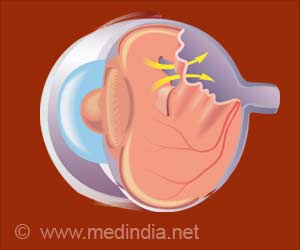Statins are safe drugs with low risk of adverse effects as per a recent statement by the American Heart Association (AHA) following a review of several studies that have assessed the safety profile of statins.
- The American Heart Association (AHA) has released a statement saying that statins are safe and the benefits of statins in patients outweigh the reported risk of side effects
- Statins are a group of drugs widely prescribed to lower serum cholesterol and to reduce the risk of heart attacks and stroke in patients at risk
TOP INSIGHT
Statins significantly reduce the risk of heart attacks and ischemic stroke in persons at risk and the benefits of statins in these persons outweighs the risks.
Read More..
Not All Muscle Symptoms are due to Statins
One of the reported side effects of statins in studies is serious muscle injury termed rhabdomyolysis, which causes breakdown of muscle and results in acute kidney injury (AKI). One of the signs of rhabdomyolysis is the passage of dark colored urine.Many patients, therefore, stop taking statins when they experience non-specific muscle pains since they attribute these symptoms to statins.
Studies have shown that less than 0.1 percent of patients actually experience rhabdomyolysis and many double-blind randomized trials have found that only one percent of muscle pain or weakness is caused by statins.
Muscle symptoms in middle-aged and older patients taking statins can be due to several reasons and it is advisable to visit a doctor when in doubt.
Other causes of muscle aches and pains include low levels of vitamin D in the blood as well as the “nocebo” effect where the patients expect and believes that the symptoms are due to the drug because of warnings on the label, press reports or what the doctor may have told them to look out for.
Measuring the serum levels of an enzyme called creatinine kinase can confirm if muscle injury has occurred. If the levels are normal, the patient can be reassured. It is important to listen patiently to the patient’s concerns and do whatever is necessary to allay the fears of the patient and reassure him.
Risk of Diabetes and Other Side Effects of Statins
Another reported risk of statins is the slightly increased risk of diabetes particularly in persons who already other have risk factors of diabetes such as obesity and sedentary lifestyle. Studies have shown that the risk of developing diabetes on statins is very low at less than 0.2 percent per year.On the other hand, in patients who are already diabetic, and have increased risk of heart attacks and stroke, the benefits of taking statins to prevent these serious events is far more than the risk of diabetes in these patients.
Statins may increase the risk of stroke caused by bleeding due to rupture of a blood vessel in the brain, especially in patients who have suffered a similar event previously. Statins do not increase the risk of first time hemorrhagic stroke.
However, the overall absolute risk of hemorrhagic stroke is small and the benefits of statins in reducing other forms of stroke and vascular events outweighs this risk.
The AHA statement also says that there is little evidence to associate other reported side effects such as liver damage, peripheral neuropathy, neurological effects, cataracts, and tendon ruptures to statins.
Do You Require a Statin?
The AHA recommends that patients should consult their doctors to assess their risk of having a major event such as heart attack or stroke in the next ten years to decide if statin therapy may be appropriate or diet and lifestyle changes are enough.Statin therapy may be appropriate in the following situations
- Persons between 40-75 years with LDL cholesterol 70-189 mg/dl and 7.5 percent or more risk of heart attack or stroke over the next 10 years
- Persons between 40-75 years with LDL cholesterol 70-189 mg/dl and having diabetes
- Persons 21 years or older with very high levels of LDL cholesterol of 190 mg/dl or more
- Prior history of heart attack, stroke, peripheral artery disease, unstable angina (chest pain) and coronary or other vessel revascularization
Reference:
- Statins have low risk of side effects - (https://newsroom.heart.org/news/statins-have-low-risk-of-side-effects?preview=ca8f)
Source-Medindia
 MEDINDIA
MEDINDIA




 Email
Email







